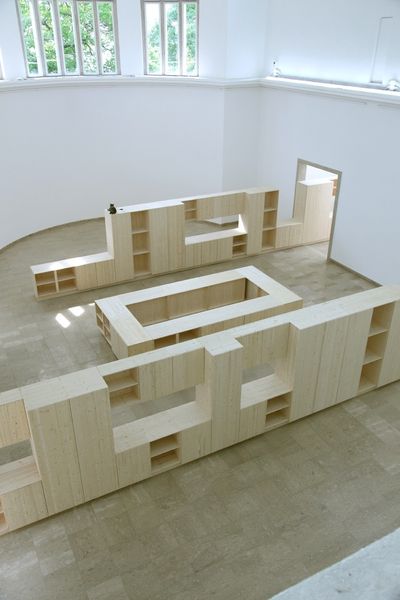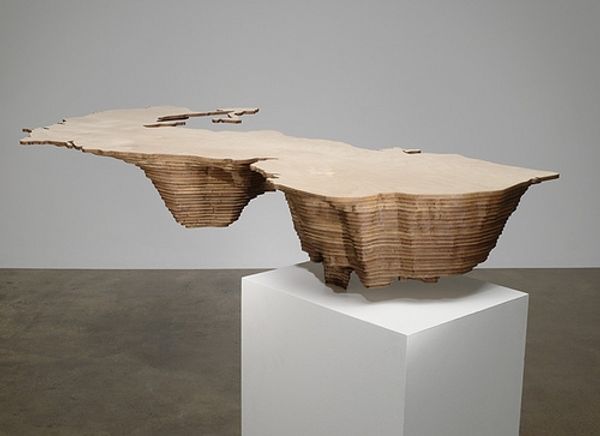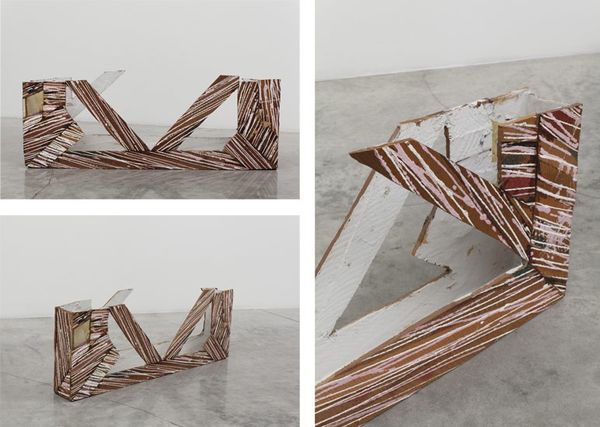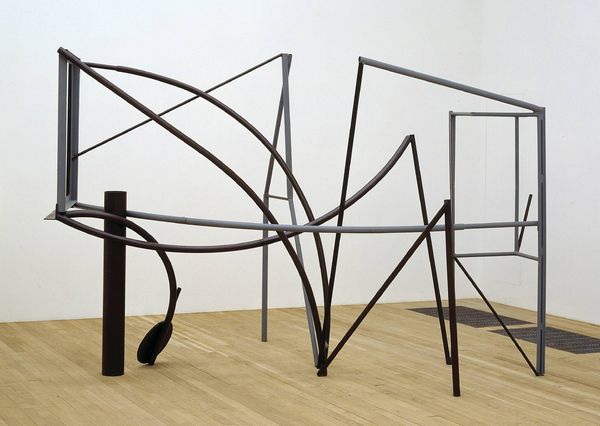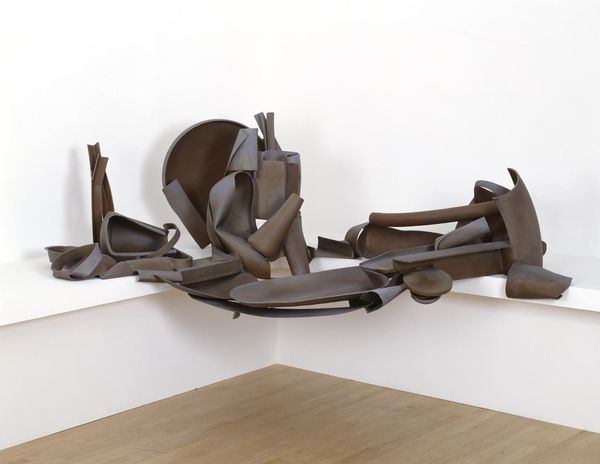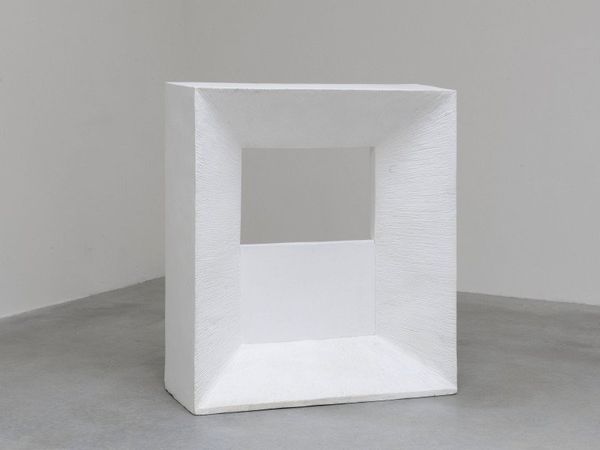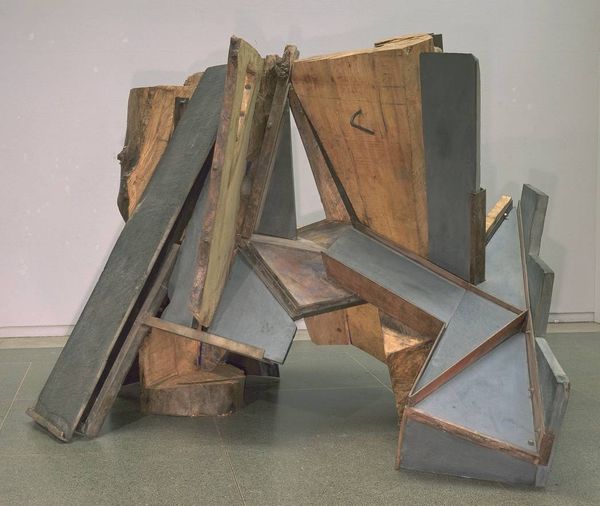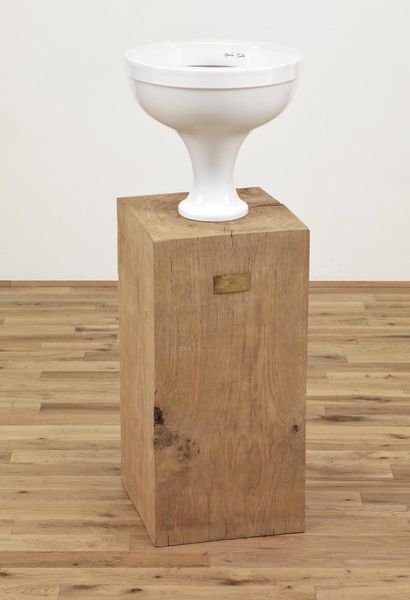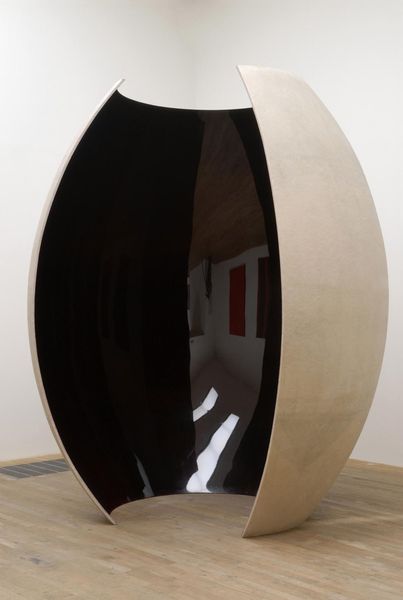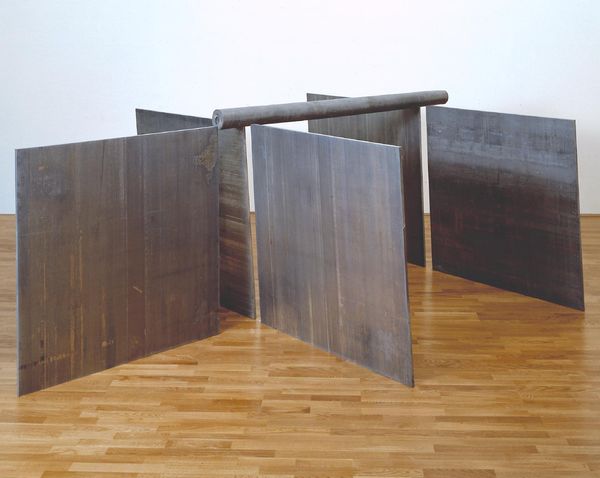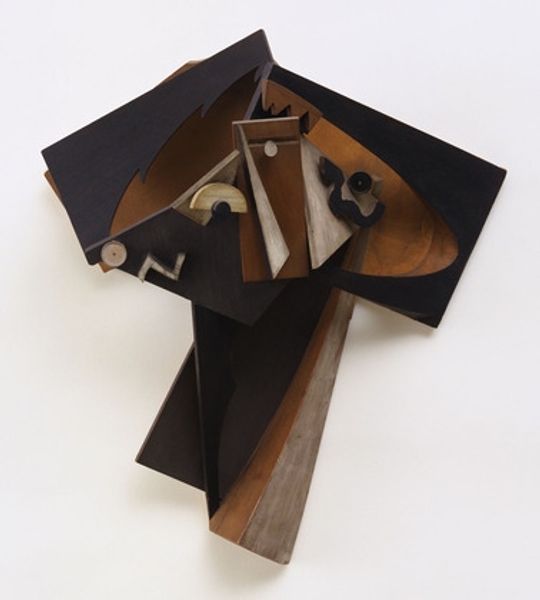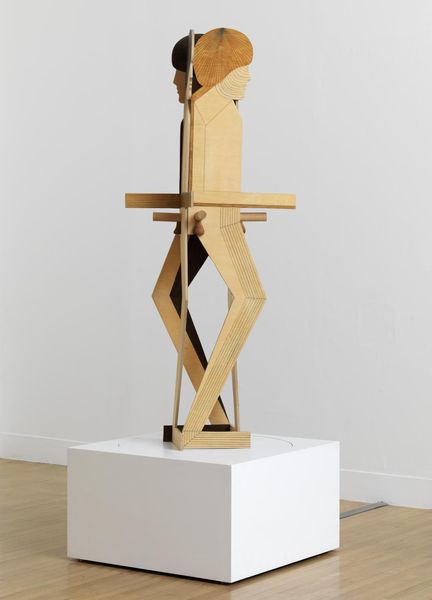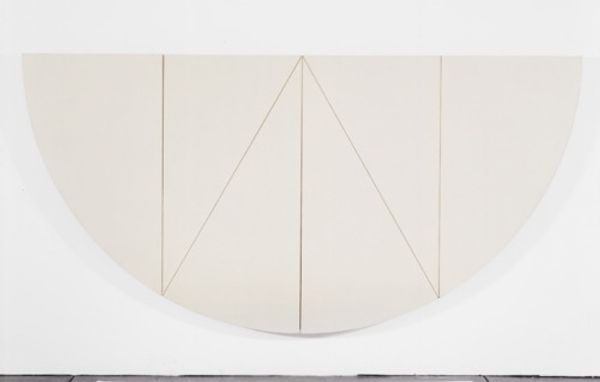
sculpture, installation-art, wood
#
conceptual-art
#
geometric
#
sculpture
#
installation-art
#
wood
#
modernism
Copyright: Alice Aycock,Fair Use
Curator: Standing before us is Alice Aycock’s 1977 installation piece, “Project Entitled ‘Studies for a Town’." The work is largely fashioned from wood. Editor: My immediate impression is of an architectural folly—a labyrinthine, vaguely unsettling structure that evokes both building site and deconstructed amphitheater. Curator: Indeed. Aycock often interrogates architectural spaces, inviting reflection on the social dynamics that define them. Constructed in the seventies, this work embodies a moment in architectural discourse increasingly influenced by structuralism and psychoanalysis. Its skeletal framework highlights how societal structures both shape and confine the individual. The town here acts as both promise and potential constraint. Editor: The raw wood lends a powerful visual texture. Notice how the circles are bisected and incomplete—which disrupt the notion of wholeness that geometry often suggests. The staircases imply upward movement but seem to lead nowhere, almost fighting against the symmetry it simultaneously presents. It strikes me as an excellent illustration of semiotic theory and structural breakdown, quite apart from sociological undertones. Curator: However, beyond formalism, the town Aycock alludes to—considering socio-political climates during its creation—could also function as a commentary on increasingly restricted urban planning policies of that era, often resulting in disenfranchisement and a heightened sense of alienation, particularly felt amongst women and marginalized communities. This "town" thus becomes an echo of societal fissures, challenging preconceived ideas of safe, communal space. Editor: I see your point. Considering it more carefully, the very lack of definition and that very intentional lack of completion invites different theoretical lenses. Still, to analyze only in terms of race and gender potentially elides formal investigations related to surface, volume, and spatial relationships. Curator: True—the brilliance resides perhaps in this delicate dance—allowing concurrent explorations to take place between formal elements, such as texture, repetition, form, and profound social commentary that invites multiple narratives from the past to present. Editor: Ultimately, both analyses enhance our encounter. Viewing art, at its best, is less about conclusions than about the journey. Curator: Yes, prompting us towards critical perspectives rather than dictating interpretation.
Comments
No comments
Be the first to comment and join the conversation on the ultimate creative platform.
